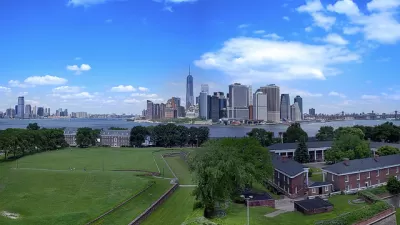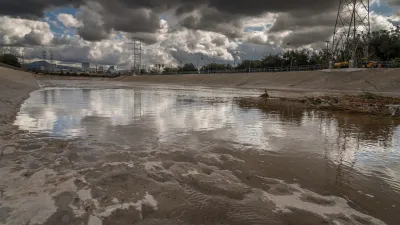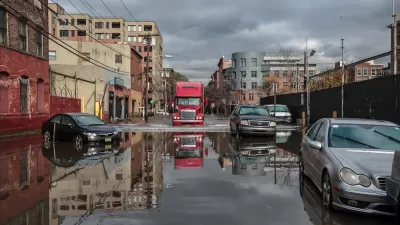The agency's report shows that inland-dwellers are just as likely as coastal types to be deeply affected by climate change.

Although those in the federal government who are critical of the science behind climate change have not retreated, the U.S. Army Corps of Engineers just released a comprehensive report “intended to help the 27 million people who live in 2,400 urban and rural communities across 204,000 square miles understand that the Ohio River and its tributaries will not escape climate disruption.”
James Bruggers, a reporter for The Courier-Journal of Louisville outlines major findings:
"► Increasingly potent storms will cause river levels to surge, risking major floods in low-lying cities like Louisville.
► More frequent and heavy droughts will likely dramatically reduce river volumes in some spots, putting in jeopardy drinking water supplies, barge traffic and power generation that relies on abundant water.
► Rising temperates and wild swings in river flows threaten to wipe out fish and other aquatic life.
► Economic losses could be ten times or more greater than from any other resource-based threats from the past."
Flooding in the Ohio River Valley, as well as heroic efforts to prevent it, is nothing new to the region. But the urgent tone of the report is worth noting. Brugger writes:
“The study concludes that the most dramatic effects are likely two decades away. But changes are happening more quickly than previously thought, and the time to start bracing for ‘a new normal’ and making plans to adapt is now.”
FULL STORY: Army engineers warn of brutal future for Ohio River region from climate change

Maui's Vacation Rental Debate Turns Ugly
Verbal attacks, misinformation campaigns and fistfights plague a high-stakes debate to convert thousands of vacation rentals into long-term housing.

Planetizen Federal Action Tracker
A weekly monitor of how Trump’s orders and actions are impacting planners and planning in America.

San Francisco Suspends Traffic Calming Amidst Record Deaths
Citing “a challenging fiscal landscape,” the city will cease the program on the heels of 42 traffic deaths, including 24 pedestrians.

Adaptive Reuse Will Create Housing in a Suburban Texas Strip Mall
A developer is reimagining a strip mall property as a mixed-use complex with housing and retail.

Study: Anti-Homelessness Laws Don’t Work
Research shows that punitive measures that criminalized unhoused people don’t help reduce homelessness.

In U.S., Urban Gondolas Face Uphill Battle
Cities in Latin America and Europe have embraced aerial transitways — AKA gondolas — as sustainable, convenient urban transport, especially in tricky geographies. American cities have yet to catch up.
Urban Design for Planners 1: Software Tools
This six-course series explores essential urban design concepts using open source software and equips planners with the tools they need to participate fully in the urban design process.
Planning for Universal Design
Learn the tools for implementing Universal Design in planning regulations.
Heyer Gruel & Associates PA
JM Goldson LLC
Custer County Colorado
City of Camden Redevelopment Agency
City of Astoria
Transportation Research & Education Center (TREC) at Portland State University
Jefferson Parish Government
Camden Redevelopment Agency
City of Claremont





























